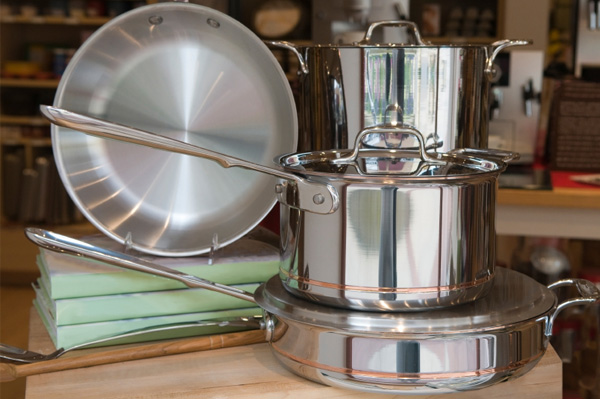
Copper or porcelain?
You can find cookware in a variety of materials, from copper to porcelain and beyond. Which one you buy depends on how you plan to use it. Find out what you need to know before dropping hundreds on that matching cook set.
Aluminum cookwarePros
Anodized aluminum pots and pans are lightweight, resist denting and scratching, don't rust and are excellent thermal conductors of heat (they'll distribute heat evenly to cook food without hot spots). Approximately half of all cookware manufactured is made from aluminum, and it is often used to improve stainless steel.
Cons
Raw aluminum (as opposed to anodized) is reactive to alkaline and acidic ingredients (tomatoes, leafy vegetables and citrus) and prone to warping and scratching. It can also discolor certain foods (such as white sauces). Fortunately, most aluminum pots and pans are treated with a coating of aluminum oxide, which vastly improves the cooking properties.
Cast-iron cookwarePros
A properly seasoned cast-iron skillet is the not-so-secret weapon of many cooks. Great for simmering and browning, cast iron imbues years of flavor into every meal. It's inexpensive, won't warp, conducts heat very well and, if seasoned well, has a relatively nonstick surface. You can also easily go from stovetop to oven.
How to care for a cast-iron skillet >>Cons
Even though no kitchen is complete without a cast-iron skillet, it does have its drawbacks. It's heavy, reactive, high-maintenance and not suited for all food. It also isn't recommended for ceramic-glass cooktops. It's worth noting that cast iron leaches — surprise — iron into your food. Many people consider this a benefit, but unexpected metal in the diet can be dangerous for certain people.
Ceramic cookwarePros
Pots and pans made from ceramic are perhaps the most versatile cookware available in stores today. They can survive heat that would melt stainless steel (so oven-safe, unless you have one heck of an oven) but still can be used to store food in the refrigerator and freezer. And unlike metal cookware, they can be used in a microwave. They are generally very easy to maintain with a naturally nonstick surface, but can take mild abrasives and scrubbing without marring their attractive gloss finish, which is important since they also make attractive serving dishes. They're widely considered to be the least reactive cookware available.
Cons
Despite many superior cooking and aesthetic qualities, ceramic cookware also has some drawbacks. It can be heavy and cumbersome and will crack if dropped. It may also crack your tile floor. Older cookware made from ceramic and stone may contain lead. Additionally, cheaper ceramic cookware may discolor ceramic-glass cooktops at higher heat.
Copper cookwarePros
Copper pots are revered for their ability to conduct heat and cook food very evenly. Chefs prize them for their ability to quickly achieve precise temperatures and maintain them, making them perfect for sauces, browning and braising. Also, they're gorgeous and will complement any kitchen.
Cons
Almost as renown as copper cookware's precision is their daunting price and their reactiveness to acid. Most are now lined with stainless steel or tin, but pure copper pots impart a metallic taste to food and can leave gray streaks. Frequent polishing is the price of beauty, and they can dent fairly easily. You absolutely should not use them on a ceramic-glass-top stove.
Glass cookwarePros
Glass is inexpensive, nonporous and nonreactive. Being nonreactive is an especially useful benefit for high-acid food like tomatoes and volatile ones like yeast. Their nonporous nature may be important to safety-conscious people, as there is growing concern over trace amounts of heavy metal leaching into food from metal cookware. Glass also bakes faster and retains heat longer than metal. Snap on a heat-safe lid, and you can easily serve up hot food at a party or picnic.
Cons
Glass is heavy and especially prone to breaking when dropped. Glass can also be difficult to clean when food bakes onto it. It's not recommended for ceramic-glass cooktops.
Nonstick cookwarePros
Cookware with nonstick coatings like Teflon, Tefal, Silverstone, Anolon, Circulon, Calphalon and others are remarkably easy to cook with and clean. They're healthier, as they require less butter or oil to start a dish, and some are engineered to be oven-safe. Nonstick ceramic is quickly growing in popularity and offsets some of the negative and dangerous aspects of nonstick coatings.
Cons
Cookware with nonstick coatings can only be used with safe utensils like plastic and wood or you risk scratching through the coating, which accelerates its inevitable erosion. Under heavy use, nonstick coatings eventually flake and scratch and introduce harmful chemicals into your food. At high heat (over 500 degrees F) some of these coatings, notably Teflon, emit offgas, which is toxic to humans, inducing flu-like symptoms. Bird-lovers beware, offgas is fatal to birds.
Porcelain enamel cookwarePros
Seen frequently as Dutch ovens and large skillets, these dishes are usually made from cast iron or carbon steel coated in porcelain enamel. They combine some of the best qualities of ceramic and cast iron. They are nonreactive and easy to clean like ceramic but don't need to be seasoned like cast iron.
Cons
They also combine some of the drawbacks of both. They're heavy and will break when dropped. There are also reports of their coating discoloring ceramic-glass cooktops at high heat, so be careful when using them.
Silicone cookwarePros
Made from sand and oxygen, silicone is nonstick, nonreactive and safe to use in the oven, microwave, refrigerator, freezer and dishwasher. They're also very lightweight and won't stain.
Cons
They are a bit on the expensive side and can be awkward and unstable.
Stainless-steel cookwarePros
The workhorse of kitchens throughout the world, you can find this cookware in just about every home in America. Stainless-steel cookware is made from an alloy of metals, which usually include some combination of steel, carbon, nickel and chromium. They're engineered to be nonporous, durable, corrosion-resistant and easy to clean.
Cons
Stainless steel is one of the more expensive types of cookware you can buy, especially when combined with other metals like copper (which is sometimes used to improve its naturally poor heat conductivity). It has a tendency to discolor under high heat and pit when exposed to salt water. Additionally, if scratched, chromium and nickel could leach into your food.
Titanium cookwarePros
Titanium is extraordinarily light and strong (the highest strength-to-weight ratio known to man, actually). It also heats very evenly and quickly. It's nonporous, nonreactive, nonallergic and can have an antibacterial coating. Titanium cookware resists scratching, denting and warping and is safe to use in the oven. If that's not enough, it's nonstick so you can start a dish without butter, oil or water. It can often be wiped clean with a washcloth.
Cons
As you might expect, titanium is very expensive — the only significant drawback. Many people decide the extra expense is justified and treat the cookware as an investment, since titanium will often still look like new after years of use.
More about cookware
Practical but professional cookware
Electric cookware for everyday chefs
Easy organizing: Kitchen cookware
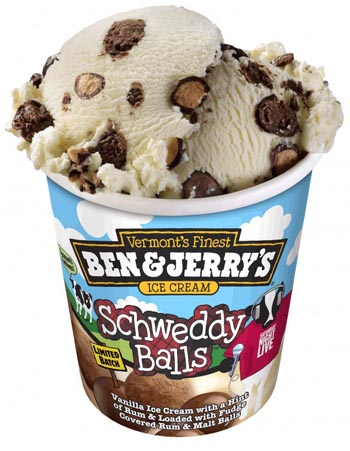
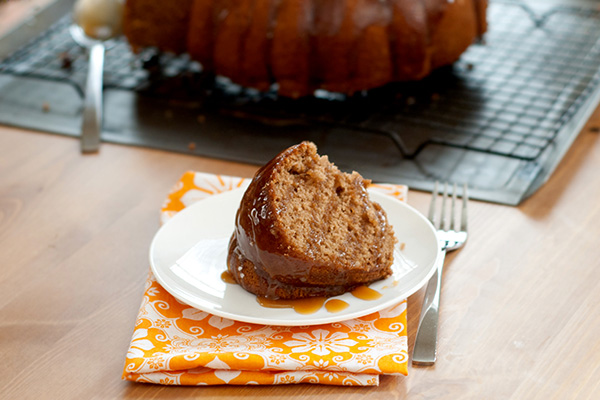



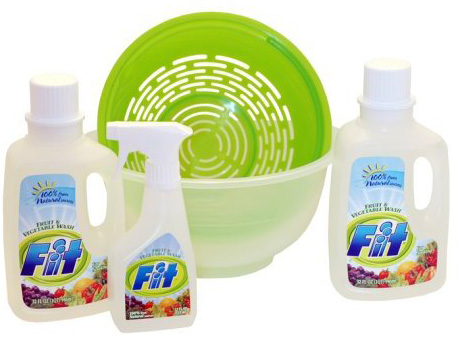 Wash, wash, wash!
Wash, wash, wash! Sack it up
Sack it up Kill two birds with one stone
Kill two birds with one stone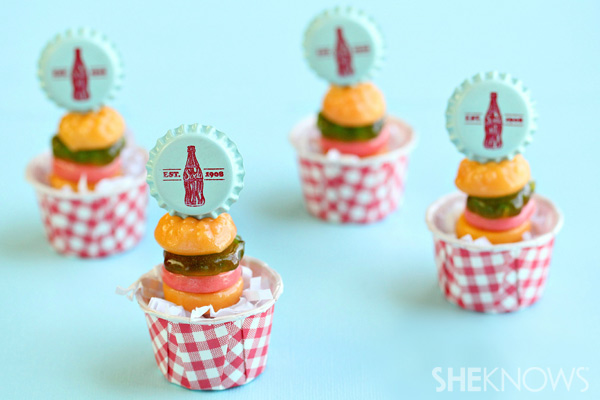
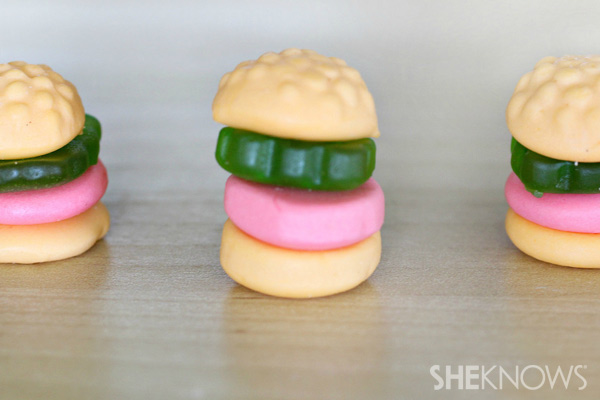
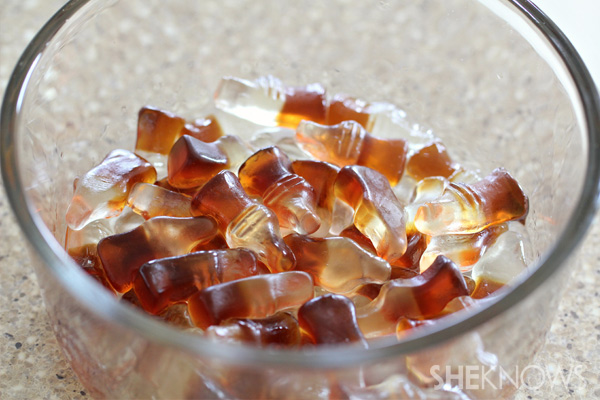
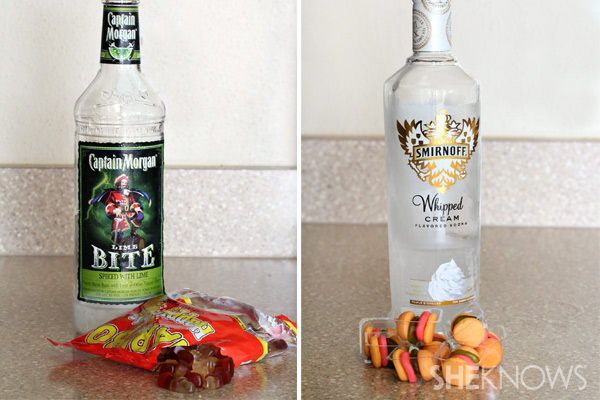
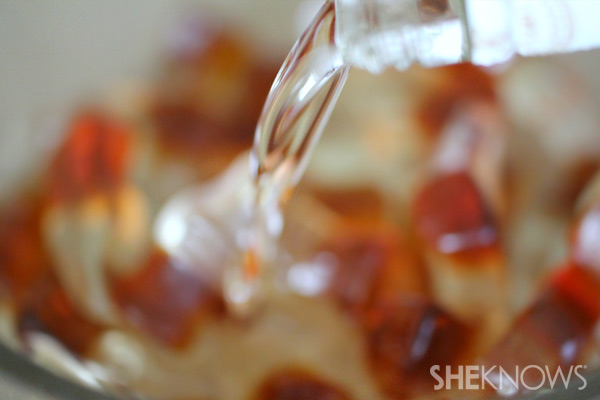
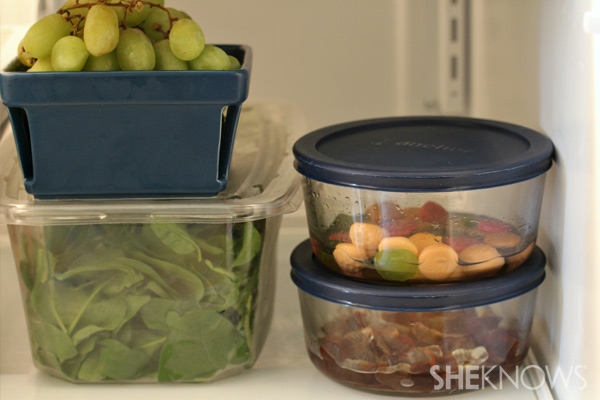
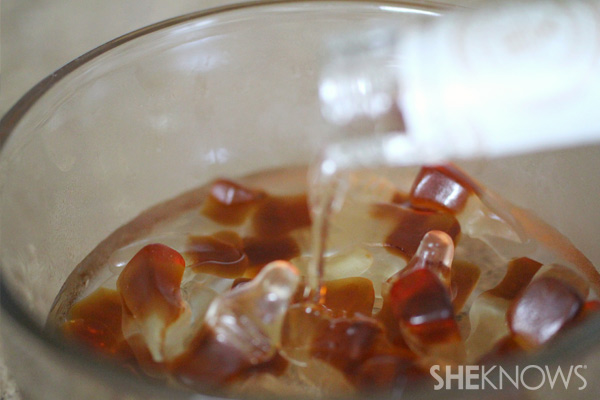
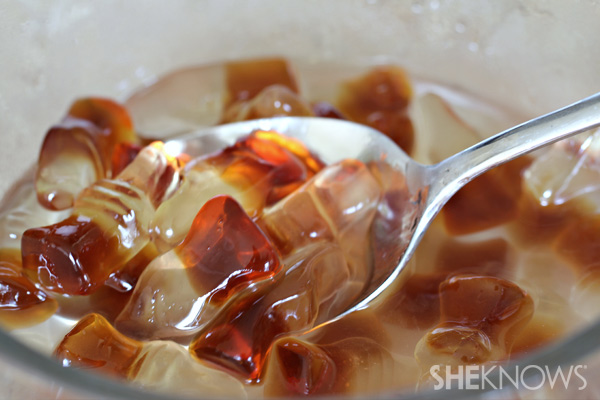
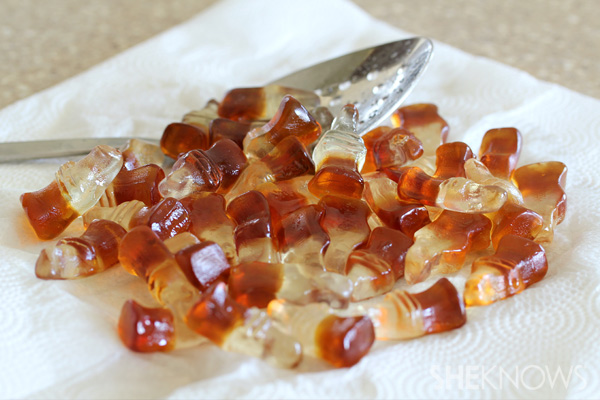
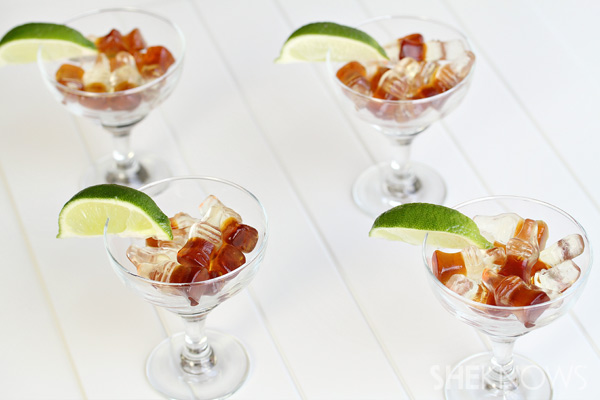



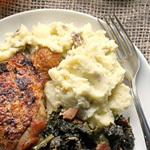

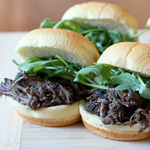
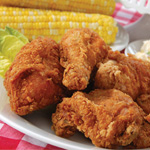
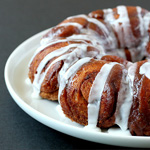
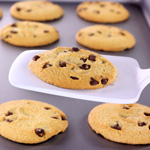

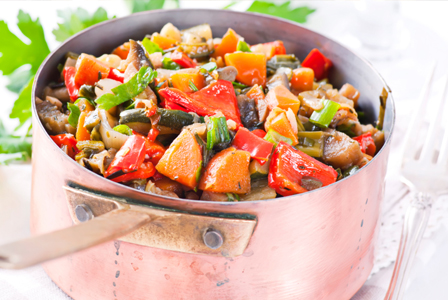
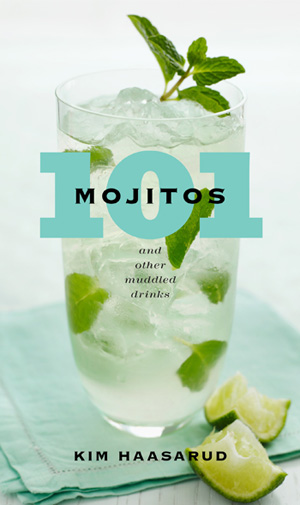 Cocktails are liquid cuisine
Cocktails are liquid cuisine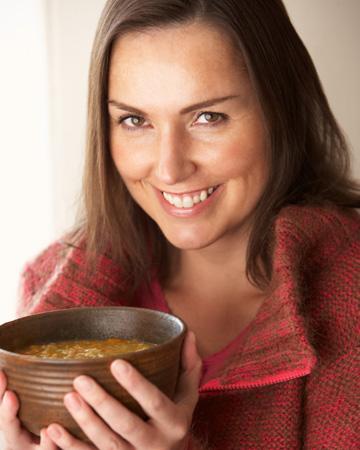 Have a healthier winter
Have a healthier winter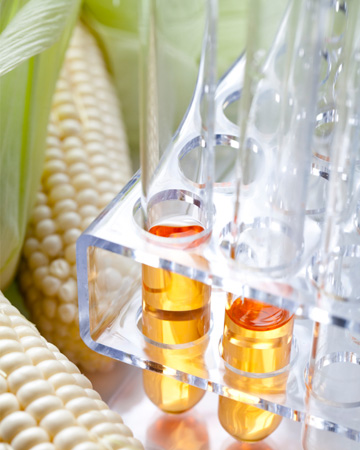 Let's call it like
Let's call it like
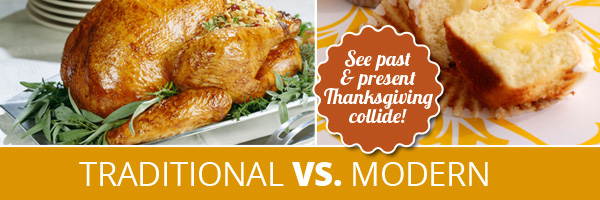 More Thanksgiving dessert ideas
More Thanksgiving dessert ideas